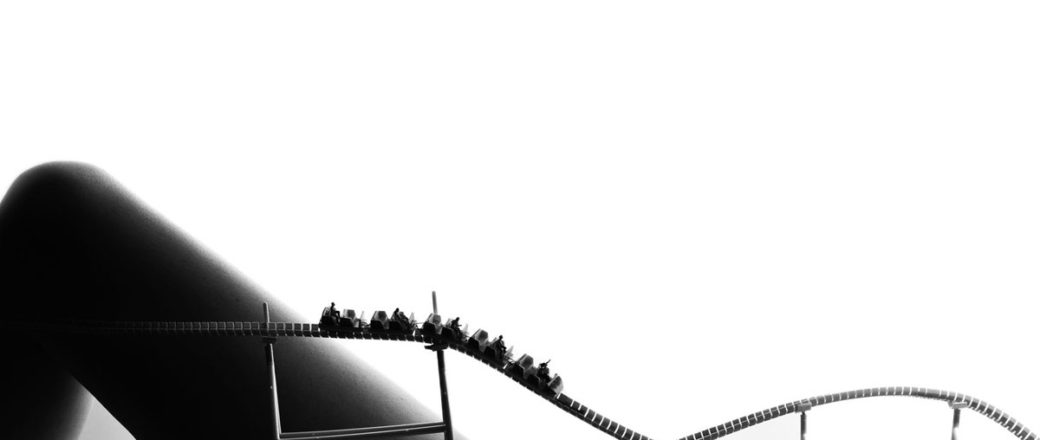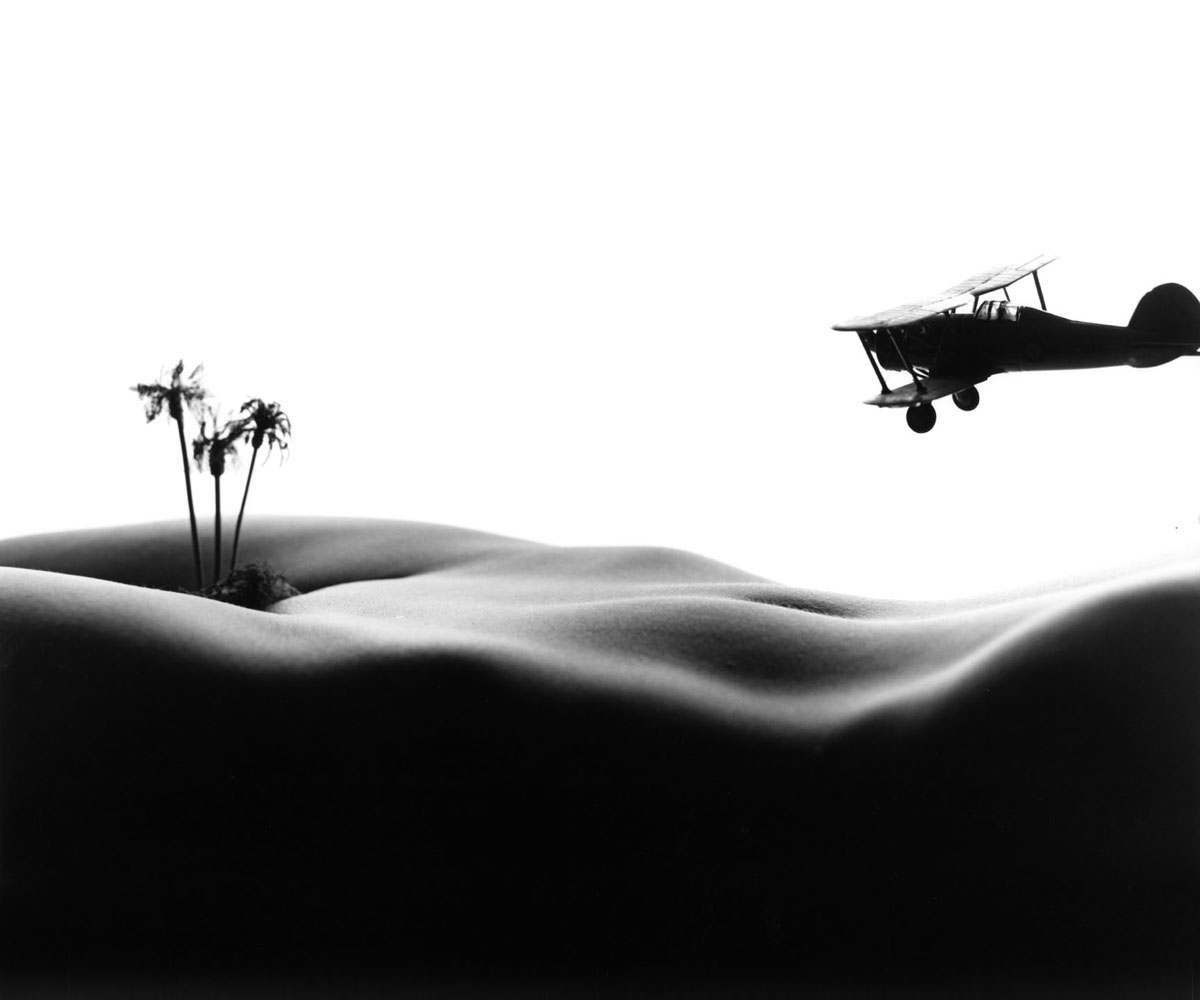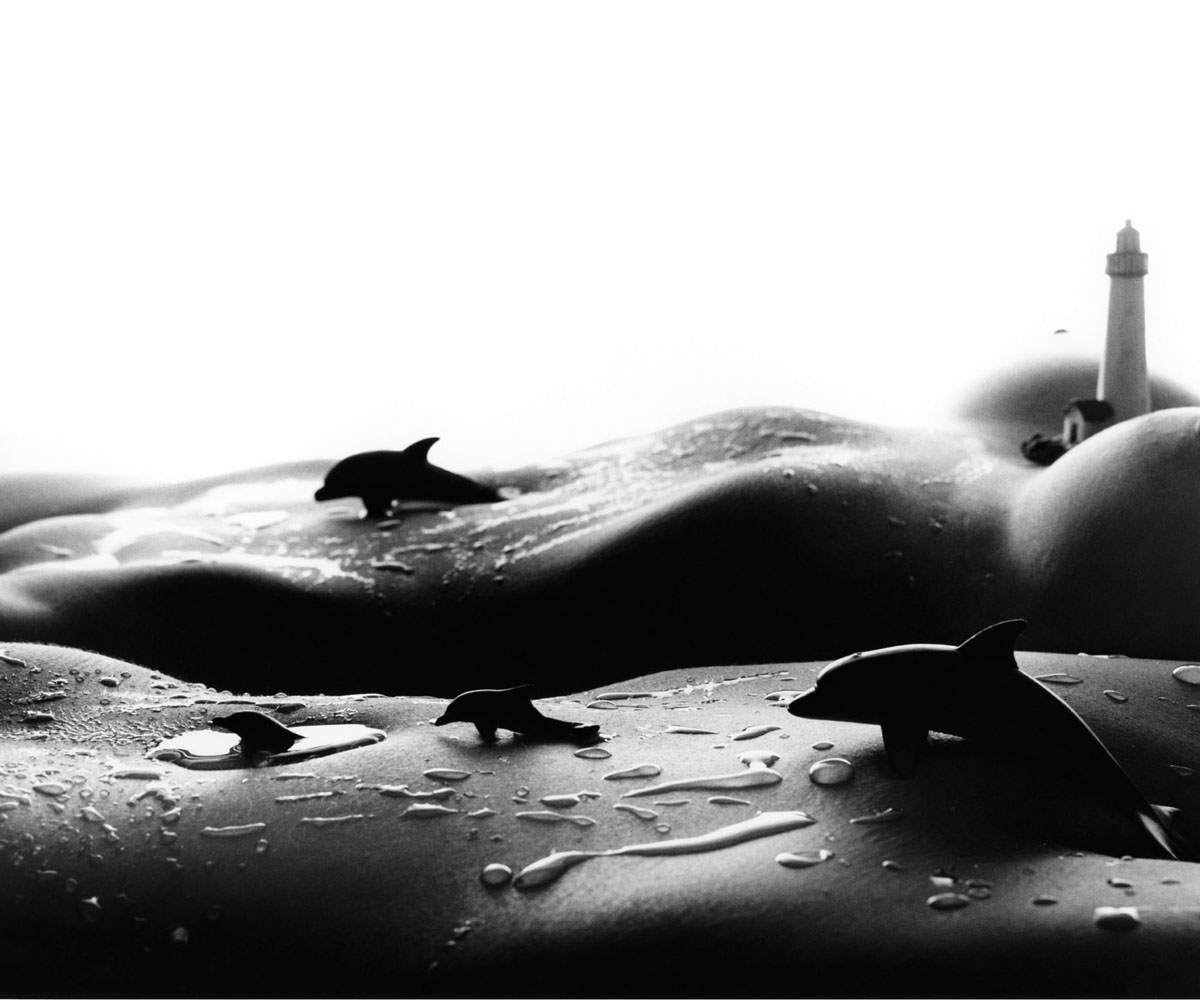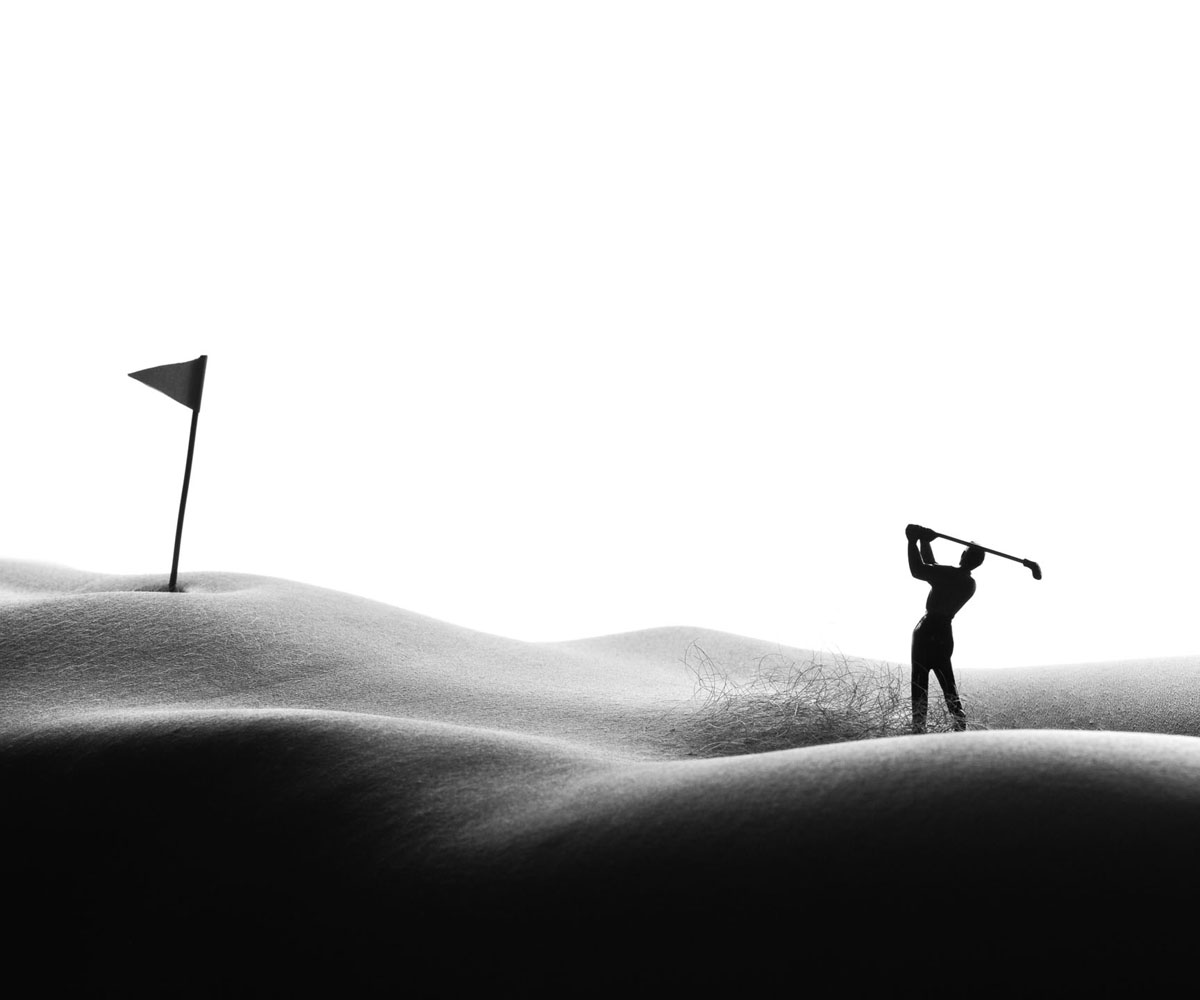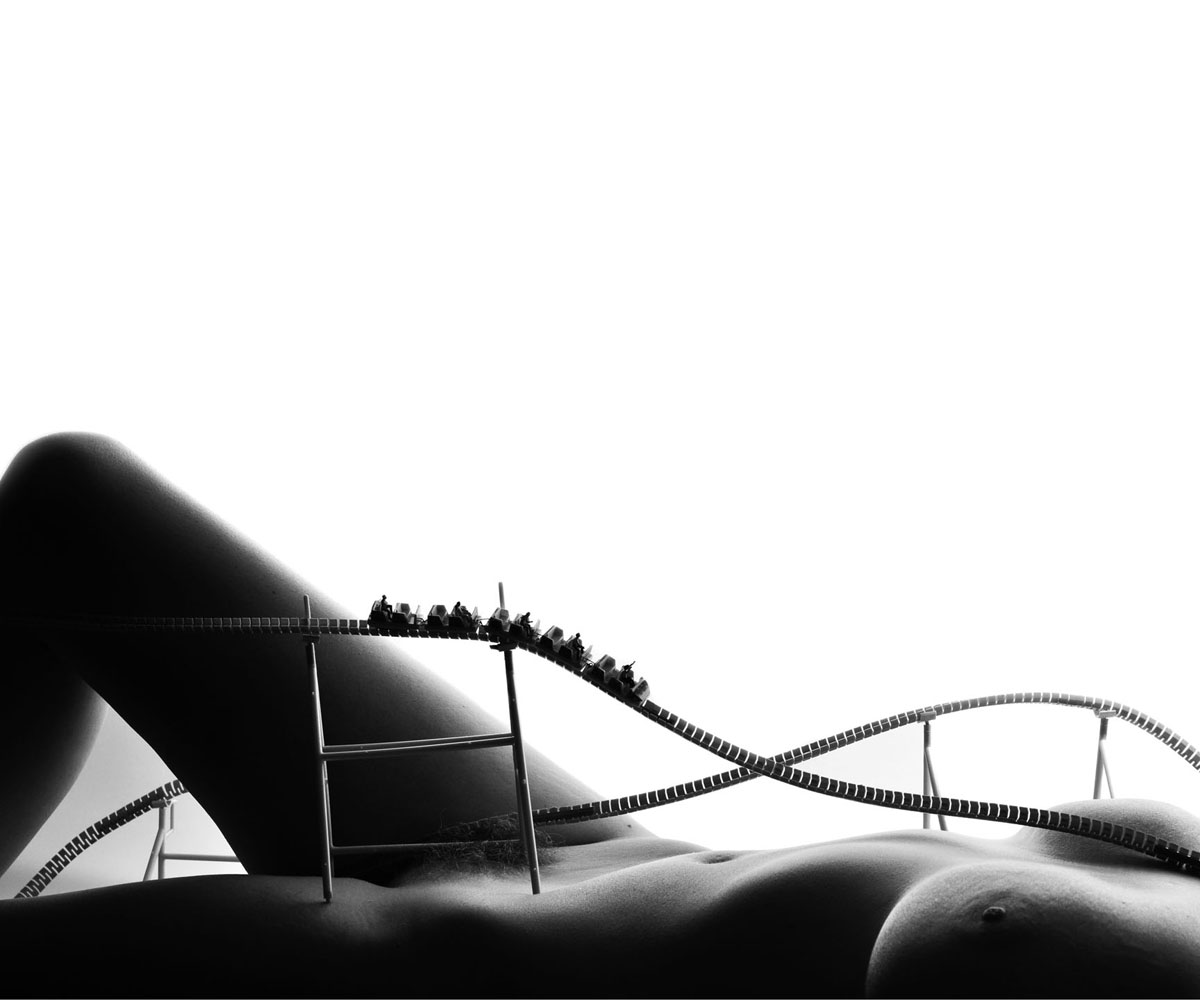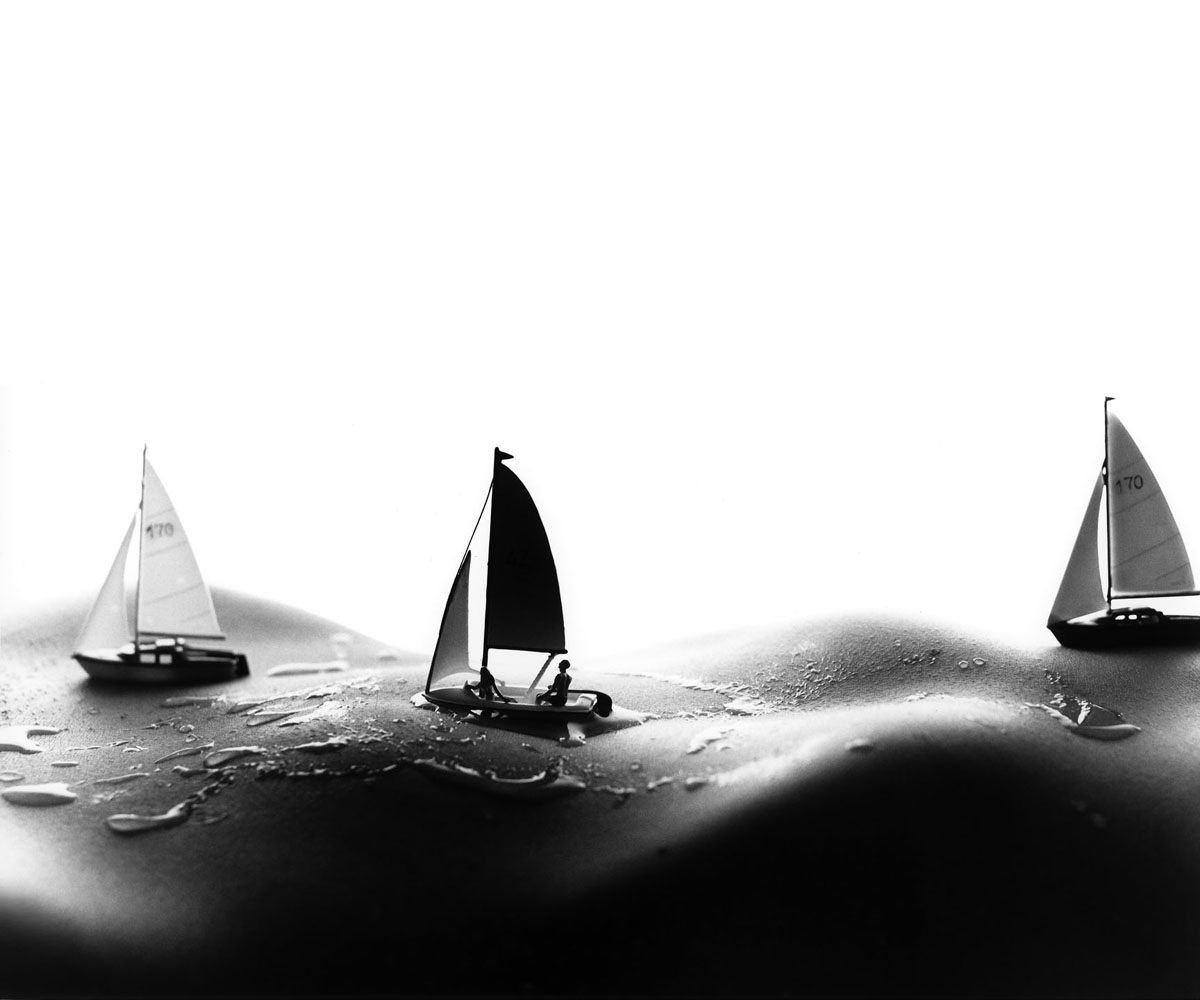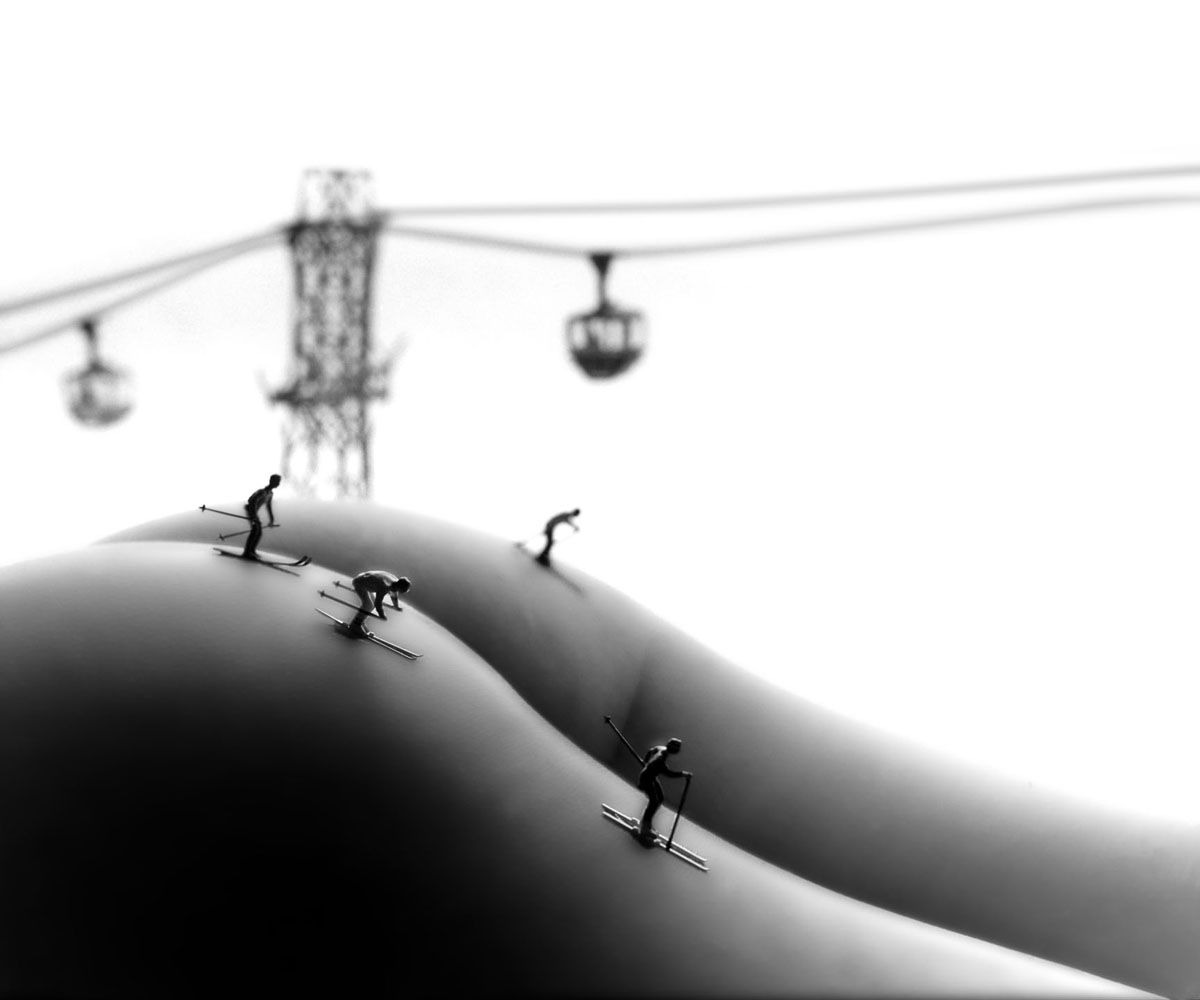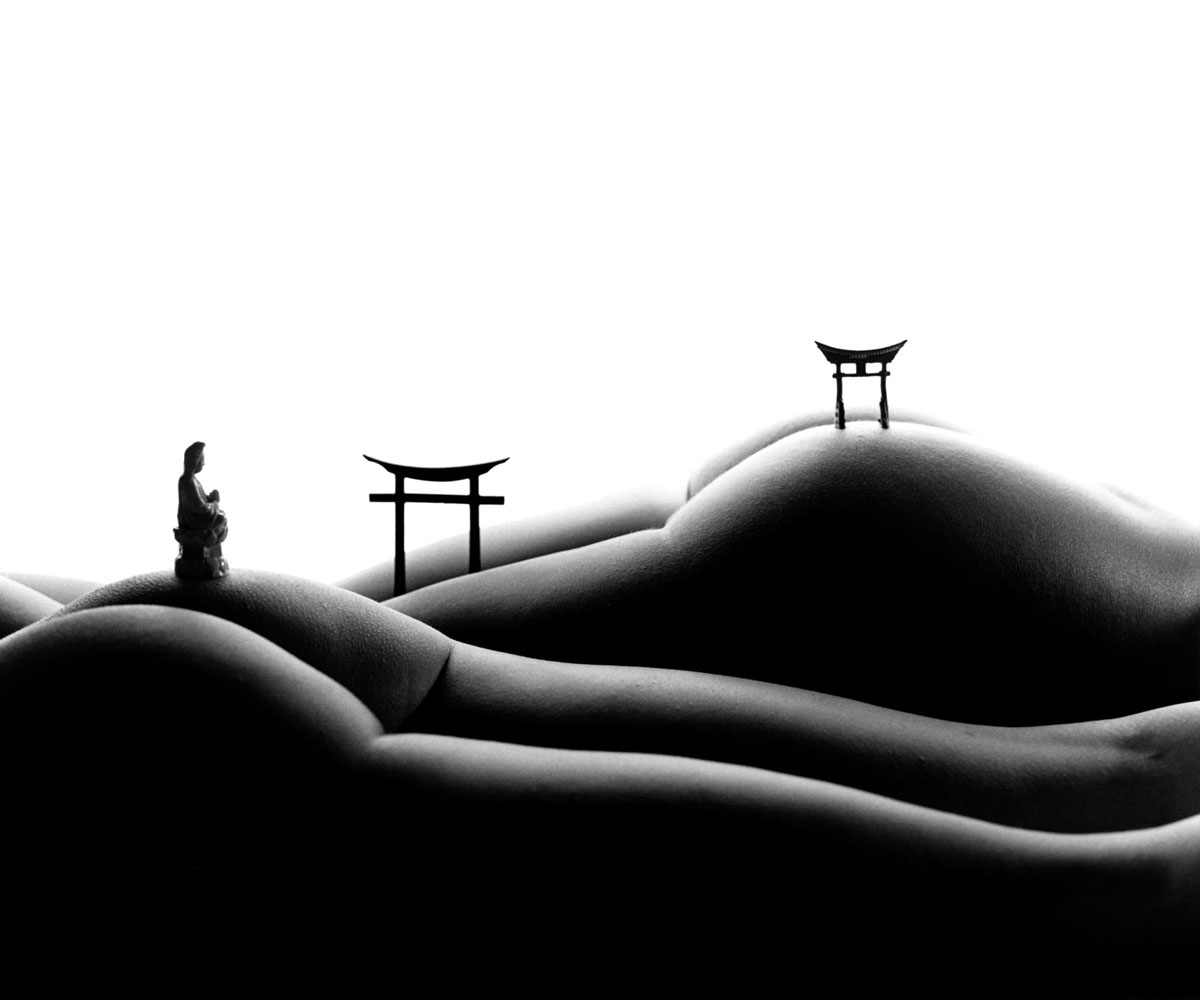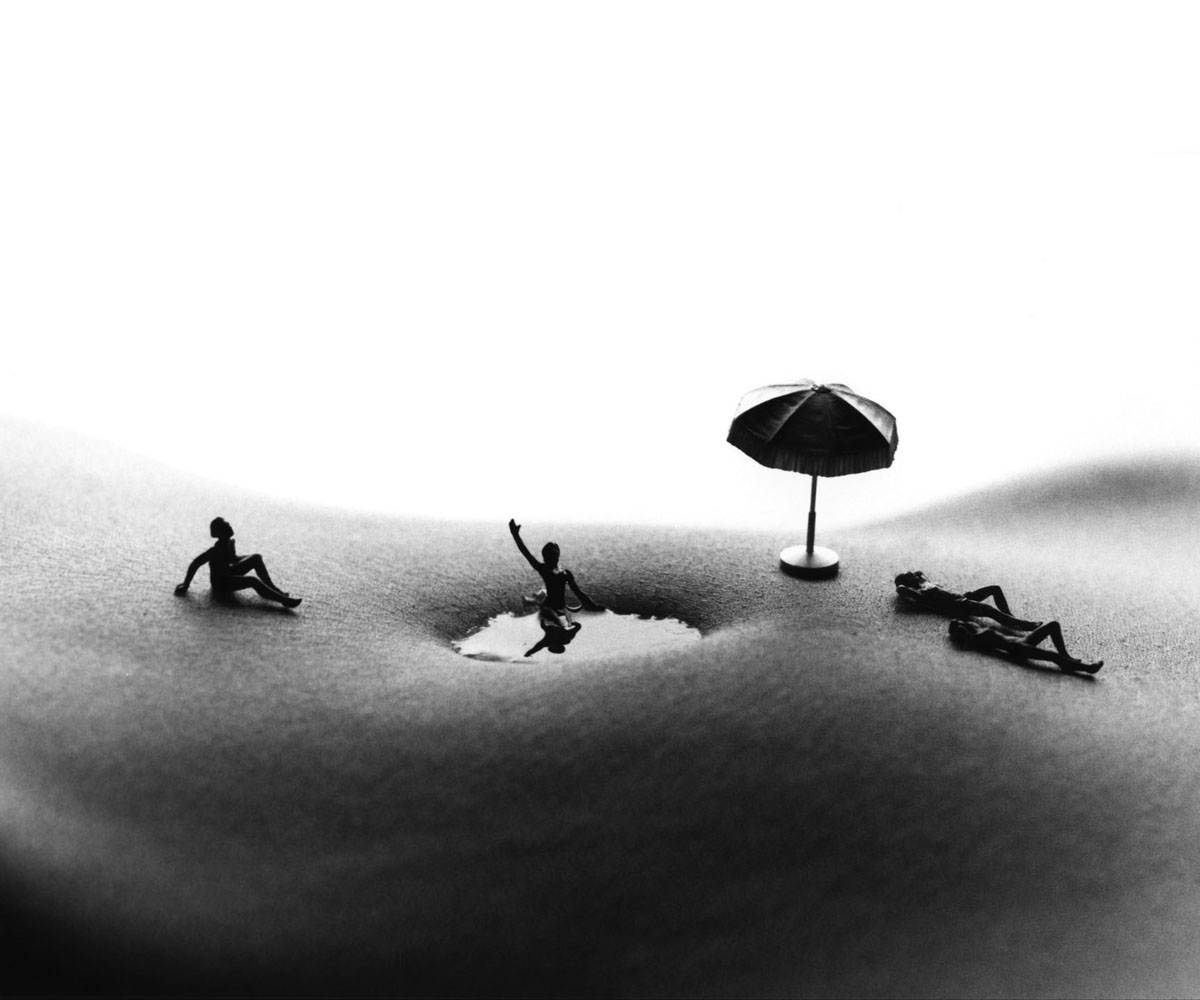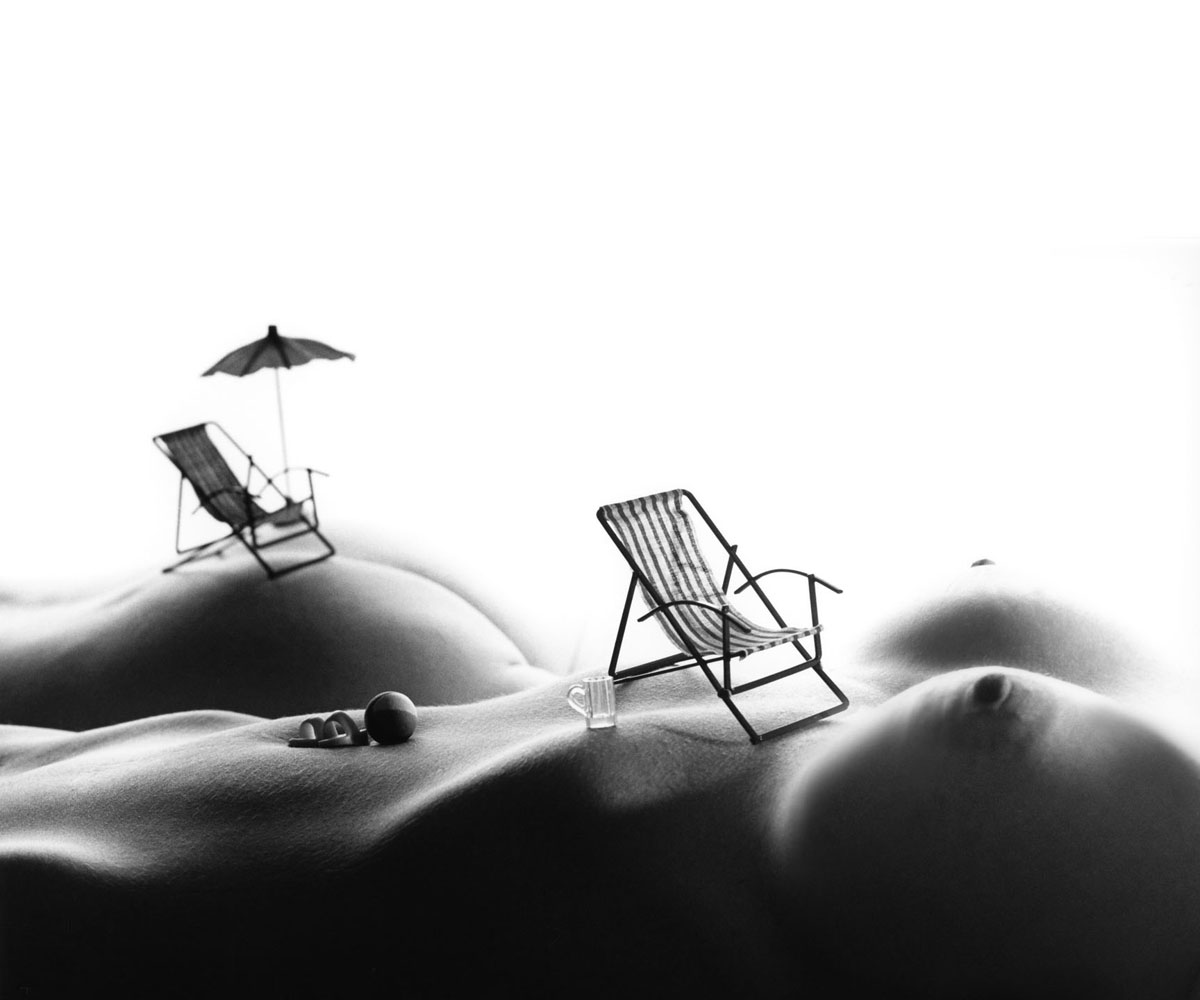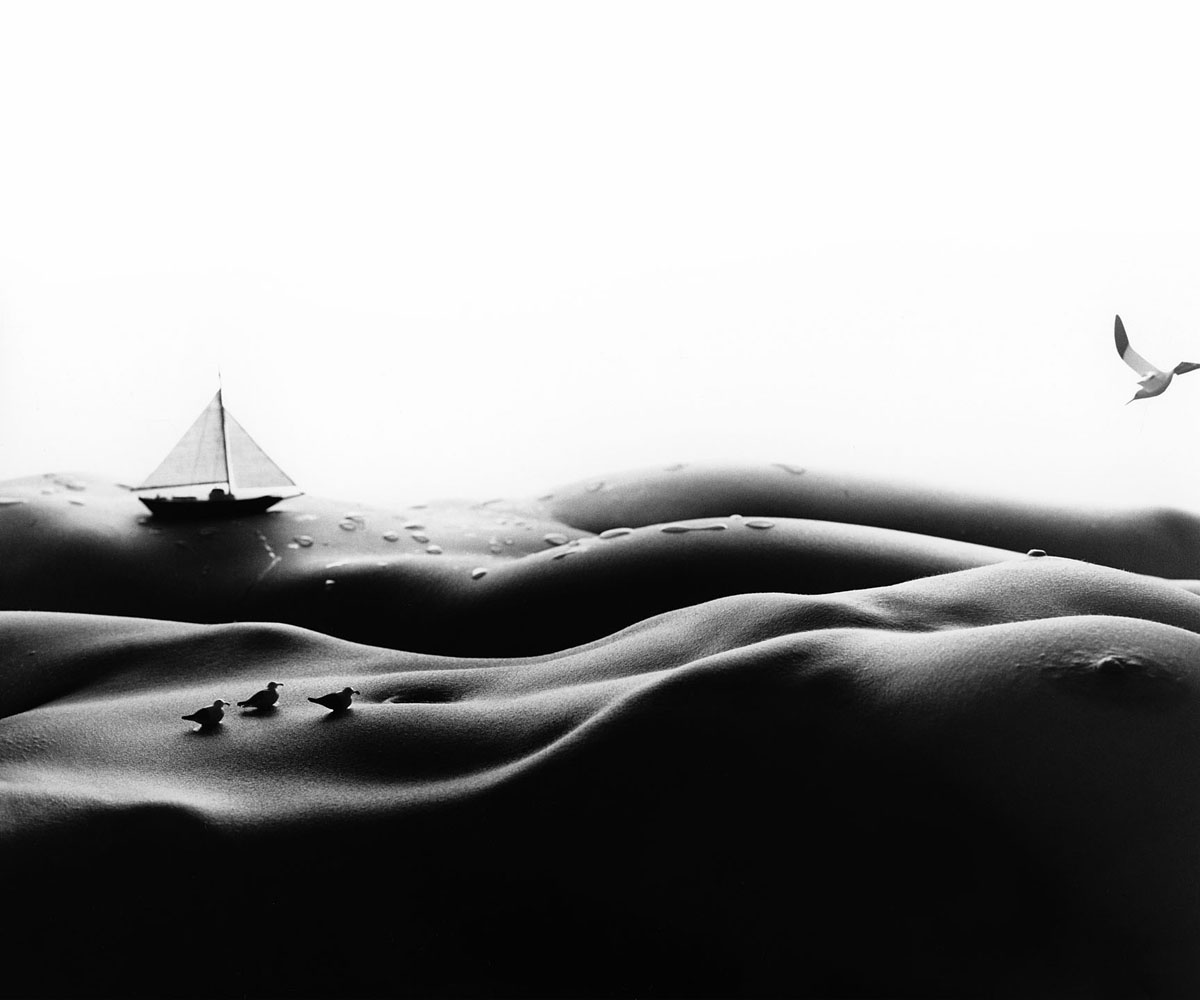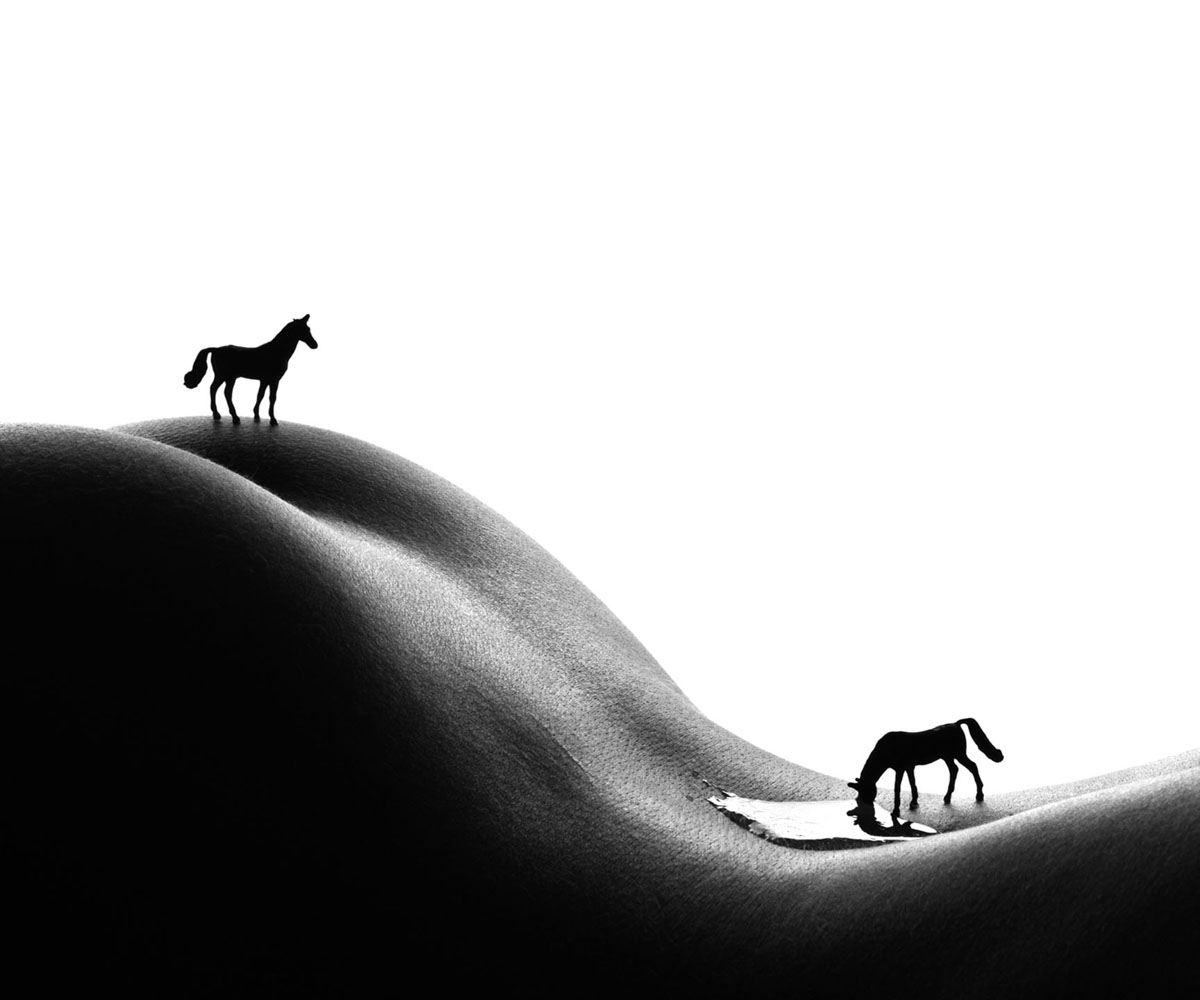The artist in every culture takes on some of the roles of the shaman. The artist walks the fine line between the conscious and the unconscious, the obvious and the hidden. My background (Ph.D. in psychology) led me to the study of consciousness, meditation and spirituality. After years of teaching I left academics to apply what I had learned to the realm of art.
I had been the school photographer all through high school and college, but put it aside during my psychology days. I returned to photography this time as art rather than photojournalism, in 1976. I returned, not because I was inspired by other photographers, but rather because I wanted to express my new understandings that came about through my studies and my teaching.
I began the Bodyscapes in 1976 with the intention of showing that it is possible to hold two different perceptions at the same time. The images are also a play on “figure-ground reversals” where the figure (in this case the body) becomes the ground (or landscape)! Two different perceptions, I felt, indicated that it possible to hold two different levels of consciousness – or two different realities. . . . and that was the inspiration behind this work.
The body as landscape reminds us that nature’s shapes repeat throughout the universe. Nature’s forms are similar in landscape and in the human body. In making these images I am always aware of the viewers experience. If I want the viewer to see a “mountain” then it is important that I also see the body as a mountain. If, instead, I see the body as someone’s rear end, then the viewer will not see the mountain! So – it becomes an interesting discipline for me – forcing me to see beyond the body to the landscape that it represents.
I choose black and white because the point of the work is the design, the lighting, the shapes – not the details of the objects. As such, black and white seemed to be more effective. Also, the color of the body didn’t match the color of the landscape that I was portraying. I tried using color at one time, but quickly stopped.
The images sometimes begin when I find a miniature which I could use in a Bodyscape. Other times, I have an idea and have to find the appropriate miniature. I sometimes have a shot planned ahead of time, but usually I have only a general feel for what I want and try out a number of different locations/angles etc. Sometimes the model offers ideas and helps with the composition! My technique is simple. Lights on booms are aimed at the white background. The model lays on a table in front of the background.
The figurines that I place on the body are from model railroads, Christmas ornaments, doll houses or collector miniatures. It is very important that I use high quality, detailed miniatures, or the illusion of a real landscape is lost. I shot with film for many years using a Mamiya RB67. Now I shoot with a digital camera, a Nikon D300. The images are still done the same way, however, with toys set on the body and a single exposure, rather than with multiple exposures or photoshop.
My next projects in this series includes working with a black and a white model in the same shot, possibly working with male and female models together, and continuing to try to get good male bodyscapes – (so far that hasn’t worked very well). I feel that I have covered most of the obvious sports themes etc, and now I plan to concentrate on producing beautiful landscapes – real and surreal.
Some people see humor, eroticism, or beauty in my work. Others notice the “ah ha!” experience. Everyone brings their own consciousness to bear as they react to what is in front of them.
Website: www.bodyscapes.com

